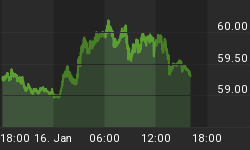So, the bond market has had another few days of riding the yo-yo. A 20-bp bond selloff on Friday (followed by a 10bp rally today) was precipitated by a stronger-than-expected Employment Report, with the actual number of jobs created exceeding estimates by 100k (including revisions to the prior two months). Interestingly, the Unemployment Rate rose, but on the whole the data was clearly better than most observers expected even if the net result is that the economy is still limping along at almost precisely the same pace it has done so for the last few years (see chart, source: Bloomberg).

And so the equity market reaction makes some sense. The jobs report was strong enough so as to alleviate (or at least salve, temporarily) fears that the economy is about to slip back into recession, while not being so strong that it could lead to a premature taper which leaves everyone gasping but unsatisfied.
The bond market, though, was routed. The bad convexity profile, combined with the poor liquidity of a trading session stranded between a holiday and a weekend, throttled fixed-income and drove rates to the highs of the move. Ten-year Treasury yields (2.74% on Friday) reached the highest levels in almost two years.
I was wrong about stocks, but right about bonds, when I said I expected the prior trends to re-assert themselves after quarter-end. Given an Employment number that missed expectations one way or the other, it was going to be hard to be right on both in the short-term.
But in the slightly longer-term, the imbalances between equities and fixed-income are building in a way they haven't been for a long time. As the chart below shows, the rally in equities has been fueled importantly by a long decline in long-term real interest rates, from 3% to -1%, since 2008.

A further equity rally is not out of the question, of course. The real equity premium (the excess expected real return of stocks relative to TIPS) in mid-2011 was as low as it is now, and that "unattractive condition" preceded a 40% rally in the stock market over two years. The difference is that in 2011, real interest rates were low, but (we know in retrospect) were destined to go much lower. It seems unlikely - although not impossible! - that real rates are about to rally again from +0.53% to -1.00%, thereby precipitating an additional rally.
Indeed, although it may be a trick of the eye the chart above seems to suggest that equity price turns lag the turns in real yields. The regression of real yield levels versus equity levels happens to have its best fit with a lag of 19 weeks. Not to worry, however: if that's not merely spurious, then it means you still have about a month before the big equity slide is due to begin!
Interestingly, the international backdrop is heating up again, although in prior incarnations the Arab Spring (now replaced by the Egyptian Summer) and Grexit crisis (now replaced with the Portuguese government stability crisis and ...the Grexit crisis) didn't cause any lasting damage to equities. However, it bears repeating that those crises occurred in the context of steady and significant declines in interest rates.
Calm, anyway, is inherently destabilizing. The Troika wouldn't be pressing Greece for more concessions, or holding Portugal's feet to the fire, if markets were going crazy. However, because markets (and especially, equity markets) are comparatively calm, it seems like a fair time for policymakers to send trial balloons aloft. Similarly, the FOMC seems oddly relaxed about the carnage in bond markets, with officials content to waggle fingers in disapprobation at market action rather than to reverse course and speak soothingly about how additional quantitative easing could be provided. I expect a one-thousand point Dow fall would change that perspective rather quickly. As parents know, it is easy to hold the line on good parenting until Junior throws a fit, and then it is so tempting to give him a lollipop to quiet him down. But, while he's behaving, why not ask him to try broccoli today?
Wahhhhhhh![¹] And then we'll see whether central bank discipline is real, or merely threatened.
















